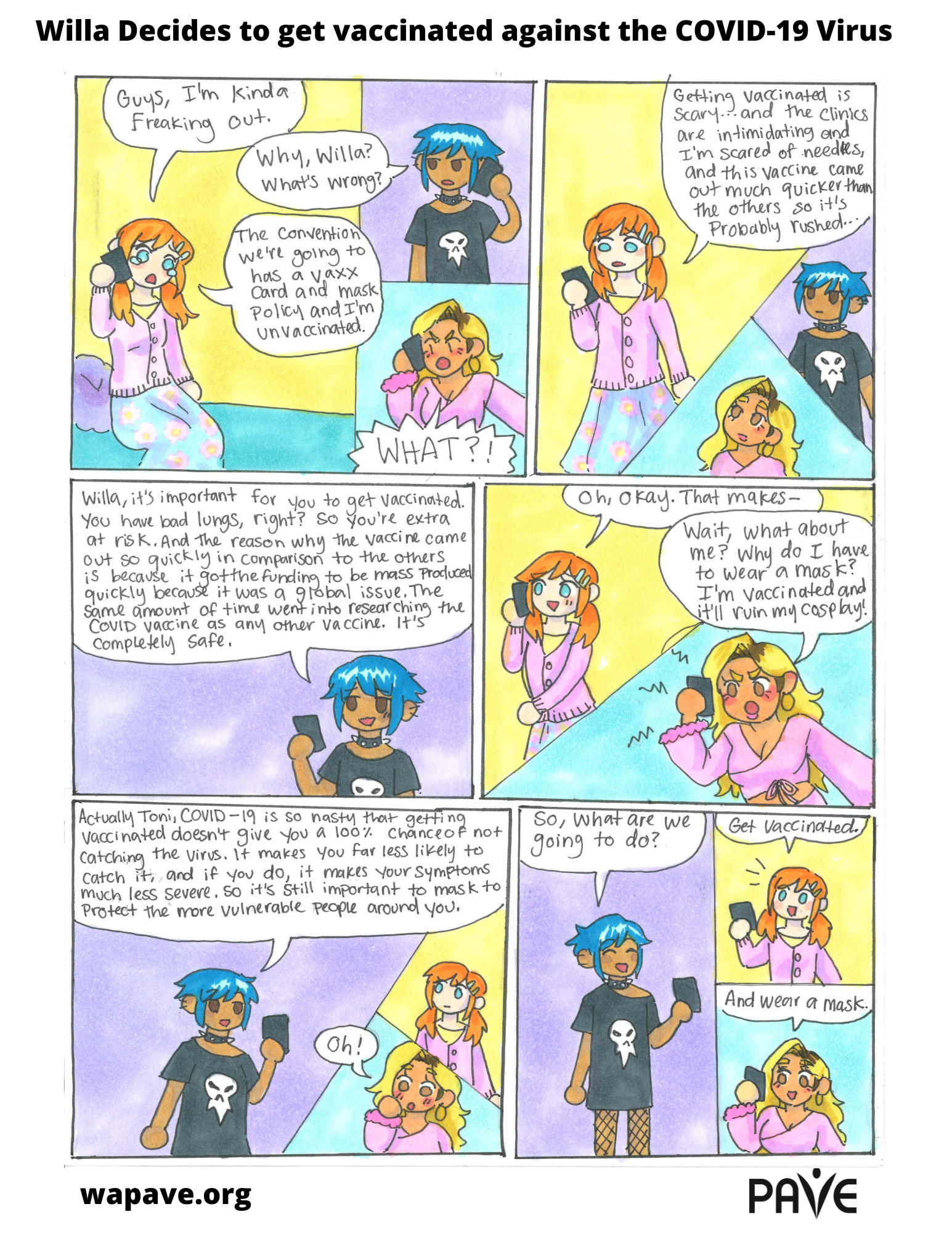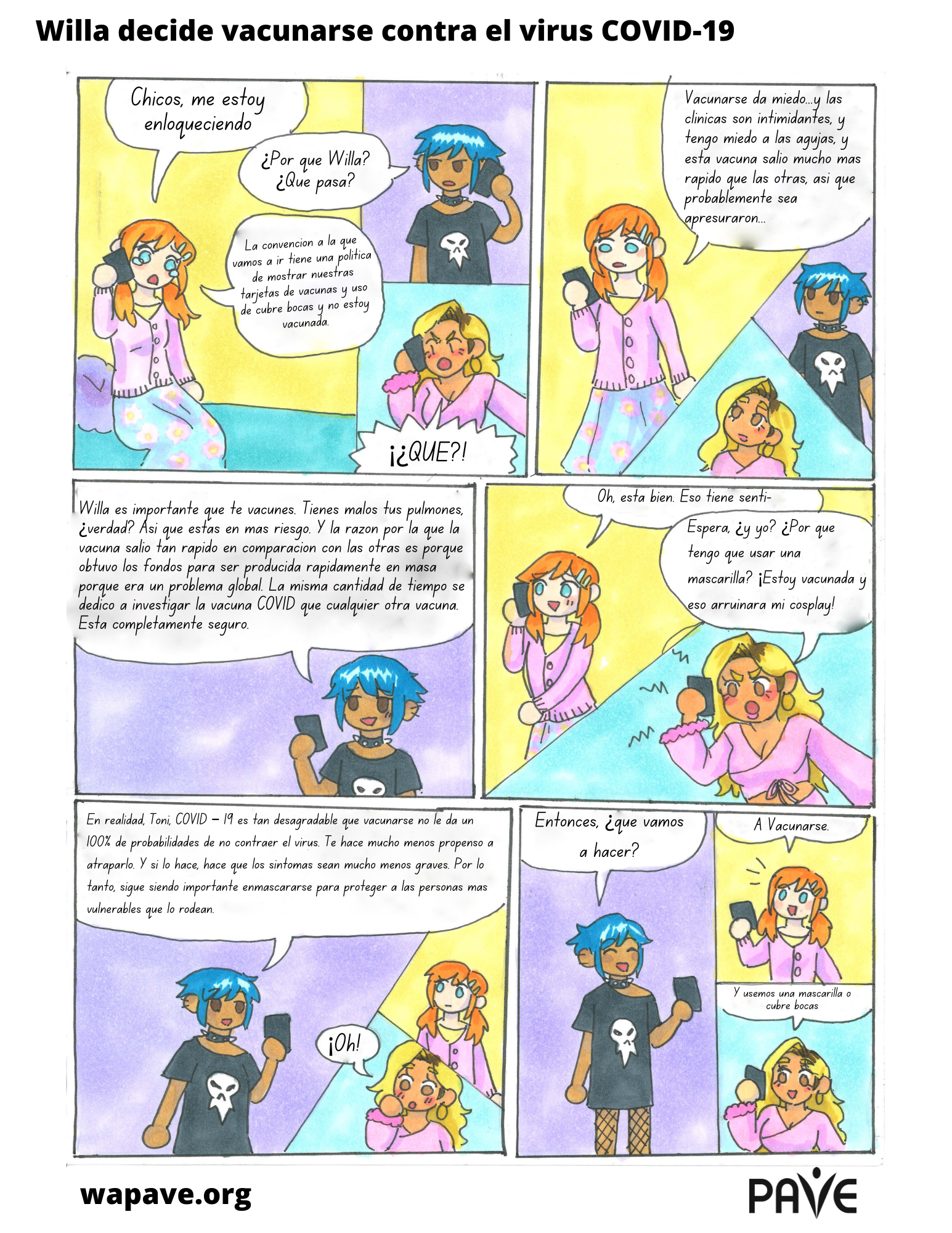A Brief Overview
- Alarming statistics indicate the pandemic worsened many behavioral health outcomes for young people. Governor Jay Inslee on March 14, 2021, issued an emergency proclamation declaring children’s mental health to be in crisis.
- President Joe Biden issued a Fact Sheet about the nation’s mental health crisis on March 1, 2022, as part of his State of the Union message. This article includes some of what the president shared about youth impacts.
- Washington State’s 2021 Healthy Youth Survey confirms that children and youth are struggling to maintain well-being.
- These outcomes make adolescence a critical time for mental health promotion, early identification and intervention. Read on for information and resources.
- The emotional well-being of students may be served through Multi-Tiered Systems of Support (MTSS), which provide a structure for schools to provide education and supports related to student well-being schoolwide.
- Students with high levels of need may access mental health support through the special education system. Emotional Disturbance is a federal category of disability under the Individuals with Disabilities Education Act (IDEA).
Full Article
Alarming statistics indicate that children and young people are in crisis. Governor Jay Inslee issued an emergency proclamation for children’s mental health on March 14, 2021. Data from Washington’s 2021 Healthy Youth Survey confirm the distressing trends:
Seven out of ten students in tenth grade report feeling nervous, anxious, on edge, or cannot stop worrying. Eight percent said they tried suicide within the past year. Almost 40 percent said their feelings were disturbing enough to interrupt their regular activities, and more than 10 percent of students said they didn’t have anyone to talk to about their feelings. According to the Centers for Disease Control and Prevention (CDC), only about half of young people who need behavioral health services get them.
According to the 2021 statewide survey, students with disabilities struggle more than most. Also over-represented are girls, students from lower income households, and students whose gender or sexuality is non-binary. Non-binary refers to more than two things; it’s a term often used when discussing people who identify as Lesbian, Gay, Bi-sexual, Transgender, Queer, or questioning (LGBTQ+). LGBTQ+ youth can seek crisis help and more from The Trevor Project.
“Reports of our children suffering with mental health issues are a worrisome public health concern,” said Umair A. Shah, MD, MPH, Washington’s Secretary of Health. “Mental health is a part of our children’s overall health and well-being. It is imperative that we all continue to work together to fully support the whole child by providing information and access to behavioral health resources to youth and the trusted adults in their lives.”
Concerns are nationwide. On March 1, 2022, President Joe Biden issued a Fact Sheet stating that grief, trauma, and physical isolation during the past two years have driven Americans to a breaking point:
“Our youth have been particularly impacted as losses from COVID and disruptions in routines and relationships have led to increased social isolation, anxiety, and learning loss. More than half of parents express concern over their children’s mental well-being. An early study has found that students are about five months behind in math and four months behind in reading, compared with students prior to the pandemic.
“In 2019, one in three high school students and half of female students reported persistent feelings of sadness or hopelessness, an overall increase of 40 percent from 2009. Emergency department visits for attempted suicide have risen 51 percent among adolescent girls.”
Mental Health support to students is a statewide priority
Recognizing the unmet needs, Washington State’s 2022 legislature passed a variety of bills to increase support to children and youth with behavioral health conditions. Here are a few examples:
- HB 1664: Provides funding and incentives for schools to increase numbers of staff who provide physical, social, and emotional support to students. Schools are responsible to report to the state how these funds were used for hiring staff that directly support students and not something else.
- HB 1800: Requires Health Care Authority (HCA) to build and maintain a website (“parent portal”) to help families seek out behavioral health services. Also supports growth and training requirements for behavioral health ombuds serving youth through the Office of Behavioral Health Consumer Advocacy.
- HB 1834: Establishes a student absence from school for mental health reasons as an excused absence.
- HB 1890: Creates an advisory group under the Children and Youth Behavioral Health Work Group (CYBHWG) to build a strategic plan for children, youth transitioning to adulthood, and their caregivers. Also establishes a $200/day stipend (up to 6 meetings per year) for members of the CYBHWG with lived experience who are not attending in a paid professional capacity.
TIP: Family caregivers can get involved in advocacy work!
Here’s another TIP: Families can ask their school who is on site to support students with their mental health needs. Some school districts seek support from an Educational Service District (ESD) to meet student behavioral health needs, so families can also ask whether ESD supports are available. Some ESDs are licensed as behavioral health providers—just ask.
What is MTSS, and why learn this acronym to ask the school about it?
A priority for agencies involved in statewide work is implementation of Multi-Tiered Systems of Support (MTSS). Through MTSS, schools support well-being for all students and offer higher levels of support based on student need. Social Emotional Learning (SEL) is key to MTSS, which creates a structure for positive behavioral supports and trauma-informed interventions.
The Office of Superintendent of Public Instruction (OSPI) is the state educational agency for Washington schools. In its 2021 budget, OSPI prioritized MTSS as part of a plan to Empower all Schools to Support the Whole Child. In January, 2021, OSPI was awarded a five-year, $5.3 million grant from the U.S. Department of Education help districts implement MTSS. As a local control state, Washington districts determine their own specific policies and procedures.
TIP: Families can ask school and district staff to describe their MTSS work and how students are receiving support through the various levels/tiers.
Special Education is one pathway for more help
Students may access mental health support through the special education system. Emotional Disturbance is a federal category of disability under the Individuals with Disabilities Education Act (IDEA). Appropriate support can be especially critical for these students: According to the U.S. Office of Special Education Programs (OSEP), students eligible for school-based services under the ED category are twice as likely to drop out of high school before graduating.
How a student is supported in their life planning could have an impact. PAVE provides a toolkit of information about how to support a student in their preparations for graduation and beyond: School to Adulthood: Transition Planning Toolkit for High School, Life, and Work.
Note that a student with a mental health condition might qualify for an Individualized Education Program (IEP) under the category of Other Health Impairment (OHI), which captures needs related to various medical diagnoses. Other categories that often overlap with behavioral health are Autism and Traumatic Brain Injury (TBI). IEP eligibility categories are described in the Washington Administrative Codes (WAC 392-172A-01035).
In Washington State, the ED category is referred to as Emotional Behavioral Disability (EBD). If the student’s behavioral health is impaired to a degree that the student is struggling to access school, and the student needs Specially Designed Instruction (SDI), then the student may be eligible for an IEP. Keep in mind that academic subjects are only a part of learning in school: Social Emotional Learning (SEL) is part of the core curriculum.
An educational evaluation determines whether a student has a disability that significantly impacts access to school and whether Specially Designed Instruction (SDI) and related services are needed for the student to receive a Free Appropriate Public Education (FAPE). FAPE is the entitlement of a student eligible for special education services. An IEP team determines how FAPE/educational services are provided to an individual student.
Behavioral health counseling can be part of an IEP
Counseling can be written into an IEP as a related service. When included in a student’s IEP as educationally necessary for FAPE, a school district is responsible to provide and fund those services. School districts can receive reimbursement for most of the cost of behavioral health services for students who are covered by Medicaid and on an IEP. The Health Care Authority provides information about school-based health services for students who are covered by Medicaid and on an IEP.
A student with a mental health condition who doesn’t qualify for an IEP might be eligible for a Section 504 Plan. A disability that impairs a major life activity triggers Section 504 protections, which include the right to appropriate and individualized accommodations at school. Section 504 is an aspect of the Rehabilitation Act of 1973, a Civil Rights law that protects against disability discrimination. Students with IEPs and 504 plans are protected by Section 504 rights.
Behavioral Health encompasses a wide range of disability conditions, including those related to substance use disorder, that impact a person’s ability to manage behavior. Sometimes students with behavioral health disabilities bump into disciplinary issues at school. Students with identified disabilities have protections in the disciplinary process: PAVE provides a detailed article about student and family rights related to school discipline.
Placement options for students who struggle with behavior
IEP teams determine the program and placement for a student. In accordance with federal law (IDEA), students have a right to FAPE in the Least Restrictive Environment (LRE) to the maximum extent appropriate. That means educational services and supports are designed to help students access their general education classroom and curriculum first. If the student is unable to make meaningful progress there because of their individual circumstances and disability condition, then the IEP team considers more restrictive placement options. See PAVE’s article: Special Education is a Service, Not a Place.
If general education is not working, the IEP team is responsible to consider all placement options to find the right fit. There is not a requirement to rule out every “less restrictive” option before choosing a placement that the team agrees will best serve the student’s needs.
Sometimes the IEP team, which includes family, will determine that in order to receive FAPE a student needs to be placed in a Day Treatment or Residential school. OSPI maintains a list of Non-Public Agencies that districts might pay to support the educational needs of a student. Districts may also consider schools that are not listed. Washington State has almost no residential options for students. Schools almost always send students to other states when residential placement is needed.
On May 23, 2022, a Washington affiliate of National Public Radio (KUOW) provided a report about the lack of residential programs in the state and the challenges for families whose students go out of state for residential education: Washington is sending youth in crisis to out-of-state boarding schools; taxpayers pick up the tab.
Residential placement may be necessary because educational needs cannot be served unless medical needs are fully supported. School districts may be responsible in those situations to pay for a residential placement. A precedent-setting court ruling in 2017 was Edmonds v. A.T. The parents of a student with behavioral disabilities filed due process against the Edmonds School District for reimbursement of residential education. The administrative law judge ruled that the district must pay for the residential services because “students cannot be separated from their disabilities.”
Strategies and safety measures for families and teachers
The Healthy Youth Survey is conducted every other year and was delayed from 2020 to 2021 because of the pandemic. Over the years, results are shared along with tips for families and schools. Here are a few considerations built from various data points within the survey:
Hopeful students:
- Are more interested in schoolwork: Is there a way to make every day at school more connected to what a child cares about?
- See people who can help: Who are the adults at school that a student can trust and go to for encouragement or guidance?
- Believe that school is relevant to life: Who is helping the student connect what they are learning now to who they want to become?
- Are academically successful: Are supports in place to provide adequate help so the student can succeed in learning? Evidence-based instructional strategies are key when students struggle in reading, writing, or math because of learning disabilities, for example.
TIP: Make sure these four topics are part of a school/family discussion when a student is struggling with emotional well-being or behavior that may be impacted by hopelessness.
A 2018 handout includes tips for parents and other adults who support teens who feel anxious or depressed:
- Bond with them: Unconditional love includes clear statements that you value them, and your actions show you want to stay involved in their lives.
- Talk with teens about their feelings and show you care. Listen to their point of view. Suicidal thinking often comes from a wish to end psychological pain.
- Help teens learn effective coping strategies and resiliency skills to deal with stress, expectations of others, relationship problems, and challenging life events.
- Have an evening as a family where everyone creates their own mental health safety plan.
- Learn about warning signs and where to get help
- Ask: “Are you thinking about suicide?” Don’t be afraid that talking about it will give them the idea. If you’ve observed any warning signs, chances are they’re already thinking about it.
- If you own a firearm, keep it secured where a teen could not access it.
- Lock up medications children shouldn’t have access to.
A press for school-based services and mental health literacy
Advocacy for direct school-based mental health services and education about mental health topics comes from the University of Washington’s SMART Center. SMART stands for School Mental Health Assessment Research and Training. The SMART center in 2020 provided a report: The Case for School Mental Health. The document includes state and national data that strongly indicate school-based behavioral health services are effective:
“Increased access to mental health services and supports in schools is vital to improving the physical and psychological safety of our students and schools, as well as academic performance and problem-solving skills. Availability of comprehensive school mental health promotes a school culture in which students feel safe to report safety concerns, which is proven to be among the most effective school safety strategies.”
The SMART Center in partnership with the non-profit Chad’s Legacy Project in 2021 established an online Student/Youth Mental Health Literacy Library. Intended for staff at middle and high schools, the library provides resources to help schools choose curricula for mental health education on topics that include Social Emotional Learning, Substance Use Disorder, and Suicide Prevention.
Goals of mental health literacy are:
- Understanding how to foster and maintain good mental health
- Understanding mental disorders and their treatments
- Decreasing Stigma
- Understanding how to seek help effectively for self and others
TIP: Families can direct their schools to this resource to support development or growth of a mental health education program.
For information, help during a crisis, emotional support, and referrals:
- Suicide Prevention Lifeline (1-800-273-TALK): After July 16, 2022, call 988
- Text “HEAL” to 741741 to reach a trained Crisis Text Line counselor
- Trevor Project Lifeline (LGBTQ) (1-866-488-7386)
- The Washington Recovery Help Line (1-866-789-1511)
- TeenLink (1-866-833-6546; 6pm-10pm PST)
- Seattle Children’s Hospital has a referral helpline. Families can call 833-303-5437, Monday-Friday, 8-5, to connect with a referral specialist. The service is free for families statewide
Further information on mental health and suicide:
Family Support
- PAVE’s Family-to-Family Health Information Center provides technical assistance to families navigating health systems related to disability. Click Get Help at wapave.org or call 800-572-7368 for individualized assistance. Family Voices of Washington provides further information and resources.
- A Facebook group called Healthy Minds Healthy Futures provides a place to connect with other families.
- Family caregivers can request support and training from COPE (Center of Parent Excellence), which offers support group meetings and direct help from lead parent support specialists as part of a statewide program called A Common Voice.
- Washington State Community Connectors (WSCC) sponsors an annual family training weekend, manages an SUD Family Navigator training, and offers ways for families to share their experiences and support one another. With passage of HB 1800 in 2022, WSCC is working with the Health Care Authority to build a statewide website to help families navigate behavioral health services.
- Family, Youth, and System Partner Round Table (FYSPRT) is a statewide hub for family networking and emotional support. Some regions have distinct groups for young people.



